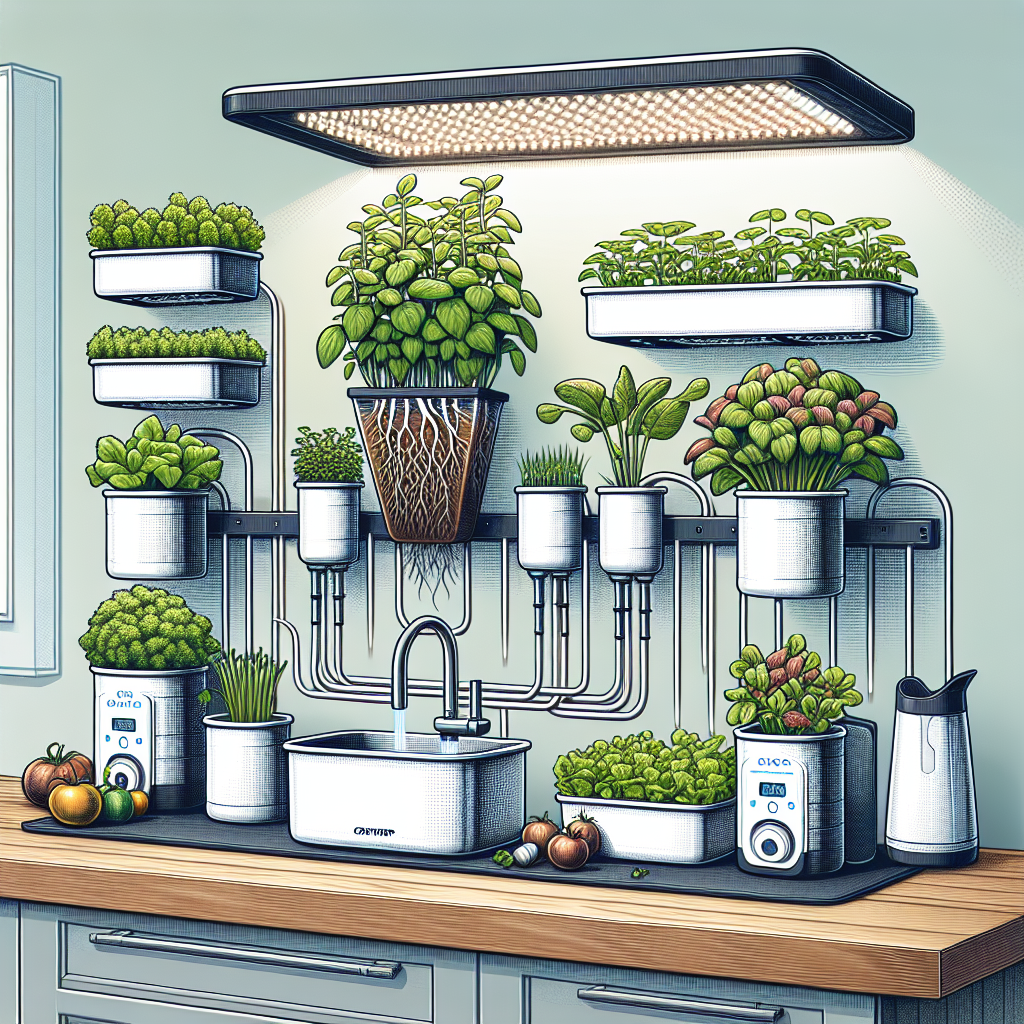Understanding Indoor Hydroponic Kits for Countertops
Indoor hydroponic kits designed for countertops have gained popularity among gardening enthusiasts and urban dwellers who want to cultivate fresh produce with limited space. These compact systems allow for efficient growing of herbs, vegetables, and even flowers right in your kitchen or living area. The innovative mechanisms of hydroponics remove the necessity for soil, utilizing nutrient-rich water solutions instead.
What is Hydroponics?
Hydroponics is a method of growing plants without soil by instead using mineral nutrient solutions in an aqueous solvent. Plant roots are submerged directly into this nutrient solution, enabling quicker growth and more control over the cultivating environment. With hydroponics, plants can absorb nutrients more effectively, leading to higher yields compared to traditional soil gardening.
Benefits of Countertop Hydroponic Kits
-
Space Efficiency: Countertop hydroponic kits are designed to maximize the use of small spaces. They can be easily placed on kitchen counters, windowsills, or any flat surface, making them ideal for apartments or homes with limited gardening areas.
-
Fresh Produce at Home: Growing your herbs and vegetables means fresher ingredients for cooking. Plants grown hydroponically often mature faster than those in soil, allowing home chefs to enjoy fresh produce year-round.
-
Lower Maintenance: Hydroponic systems typically require less maintenance than traditional gardening. There’s no weeding, and plants are less susceptible to soil-borne diseases, reducing the need for pesticides.
-
Water Efficiency: Hydroponics systems use significantly less water than traditional gardening because the closed-loop system recirculates water. This makes hydroponic systems not only environmentally friendly but also cost-effective in water use.
Types of Hydroponic Systems
Countertop systems usually employ several types of hydroponic methods:
-
Nutrient Film Technique (NFT): A thin film of nutrient-rich water flows over the roots of the plants. This method ensures that the roots receive constant nutrients while exposed to oxygen.
-
Deep Water Culture (DWC): In this system, plant roots hang in a nutrient solution, and an air pump provides oxygen directly to the roots, promoting rapid growth.
-
Ebb and Flow (Flood and Drain): This method uses a timer to flood the plant roots with the nutrient solution and then drain it back into the reservoir. This process mimics natural growing conditions and is effective for a wide variety of plants.
-
Aeroponics: This high-tech method involves suspending plants in air and misting the roots with nutrients. Although more complex, aeroponic systems often yield the fastest growth rates.
Popular Countertop Hydroponic Kits
-
Click and Grow Smart Garden: This kit features a self-watering system and LED grow lights, making it quite user-friendly. Pre-packaged plant pods are available for various herbs and vegetables, ensuring you have plenty of options.
-
AeroGarden Harvest Elite: This kit utilizes a deep water culture system with an easy-to-use panel for monitoring growth. It includes built-in LED lights and a self-watering mechanism, and you can also customize it with different seed pods.
-
iDOO Hydroponics Growing System: This system includes a smart soil-less growing solution designed for beginners. It has adjustable LED lights and an automatic timer, ensuring your plants get the right amount of light and water.
-
Herb Garden Starter Kit: Ideal for beginners, this kit offers a hands-on approach to hydroponics, featuring everything you need to grow nutritious herbs like basil, cilantro, and mint.
Key Components to Consider
When choosing a countertop hydroponic kit, consider the following components:
-
Size: Depending on how much space you have, choose a kit that fits comfortably on your countertop without overcrowding.
-
Capacity: Look at how many plants the system can support. If you’re planning to grow multiple varieties, ensure your kit can accommodate that.
-
Lighting: Many kits come with built-in LED lights to simulate sunlight. Be sure to choose a system with sufficient light intensity for your chosen plants.
-
Ease of Use: For beginners, select a kit that is straightforward to operate. Some systems are more suited to individuals who are comfortable with technology, while others focus on simplicity.
-
Materials: Ensure the materials used are durable and safe. Choose systems made from BPA-free plastics that won’t leach harmful chemicals into your food.
Maintenance Tips for Countertop Hydroponics
-
Regular Monitoring: Check the nutrient solution levels frequently. Depending on your system, it may need to be replenished weekly.
-
Cleaning: Keep the system clean by periodically washing the containers and pumps. This minimizes the risk of bacterial and algal growth.
-
Check pH Levels: The pH level of your nutrient solution is crucial. Most herbs and vegetables thrive at a pH between 5.5 and 6.5. Using a pH meter will help you maintain the ideal levels.
-
Pest Control: Regularly inspect your plants for pests. You can use natural insecticides or dilute soap spray for treatment if needed.
-
Rotate Crops: To avoid nutrient depletion and to promote biodiversity, consider rotating plants. For example, after harvesting basil, plant different crops in the same space.
Final Thoughts on Indoor Hydroponic Kits
Investing in a countertop hydroponic kit can revolutionize your gardening experience, bringing fresh produce directly into your home while minimizing space and environmental impact. This compact solution efficiently bridges the gap between urban living and sustainable gardening. For anyone passionate about home-cooked meals or simply wanting to enjoy the process of growing their food, countertop hydroponic kits represent an exciting and rewarding adventure.
